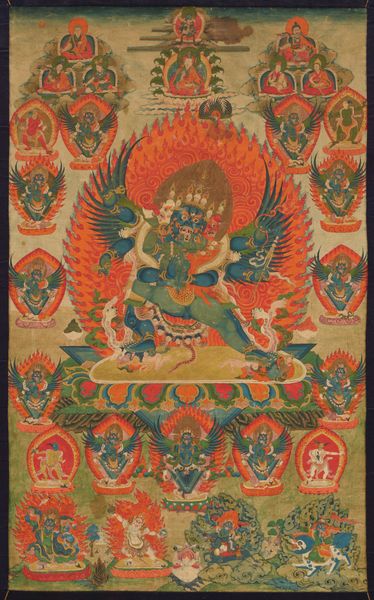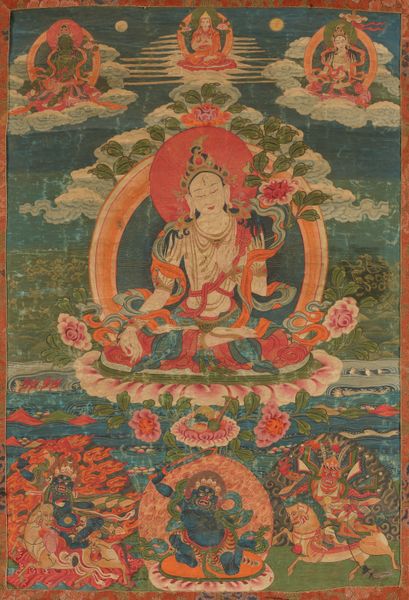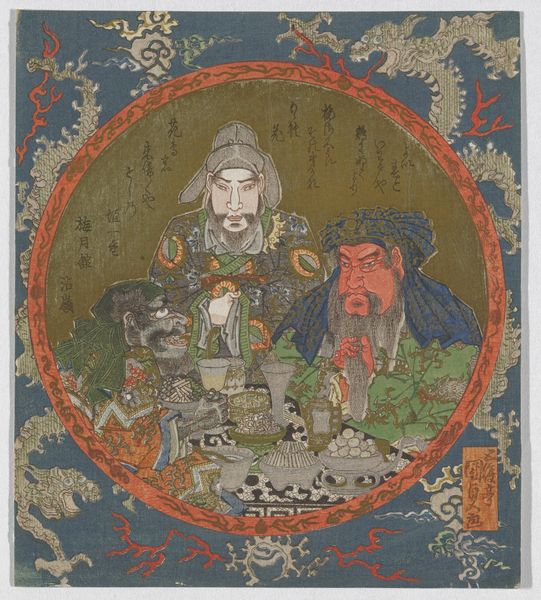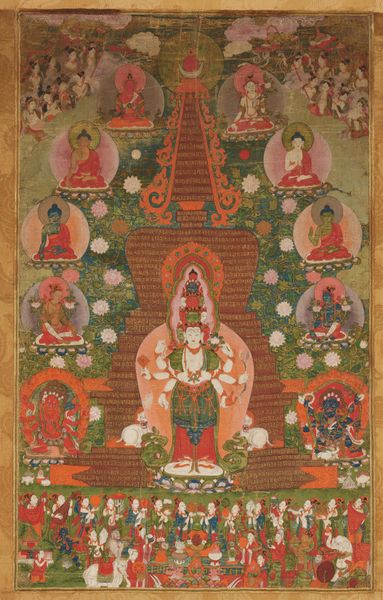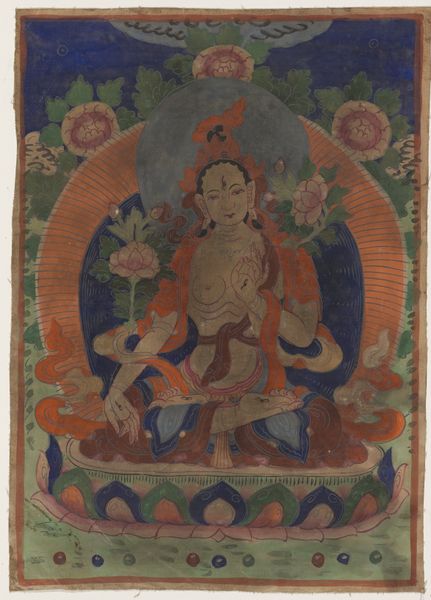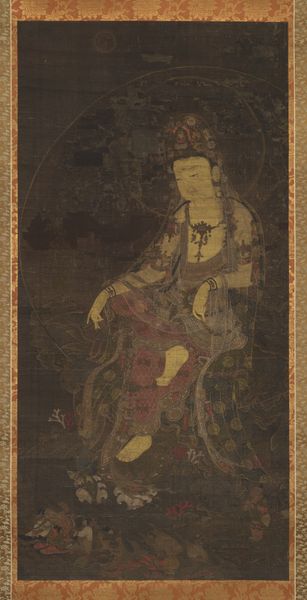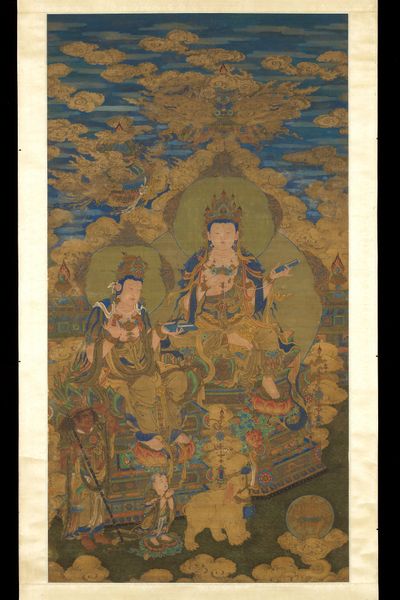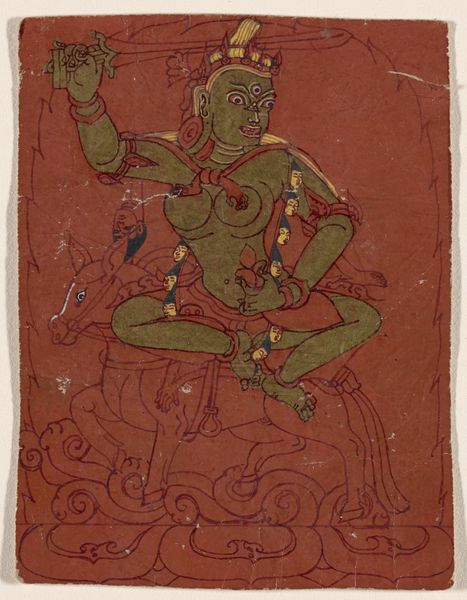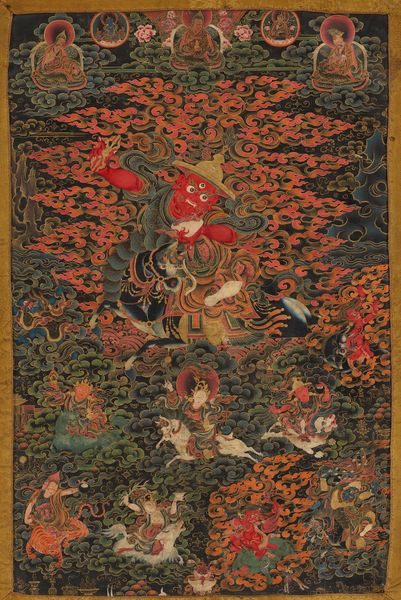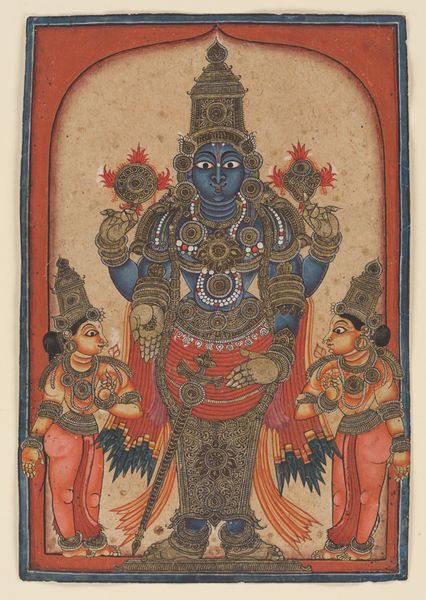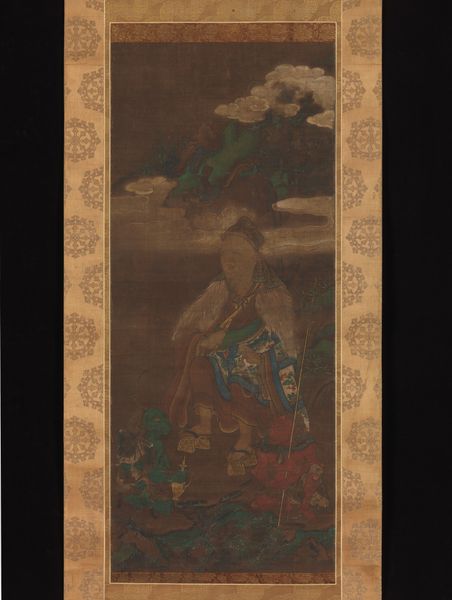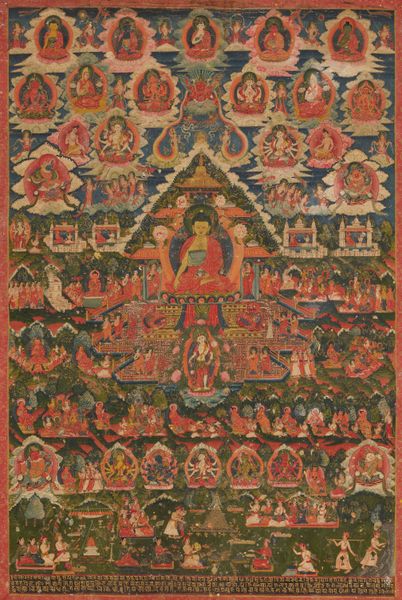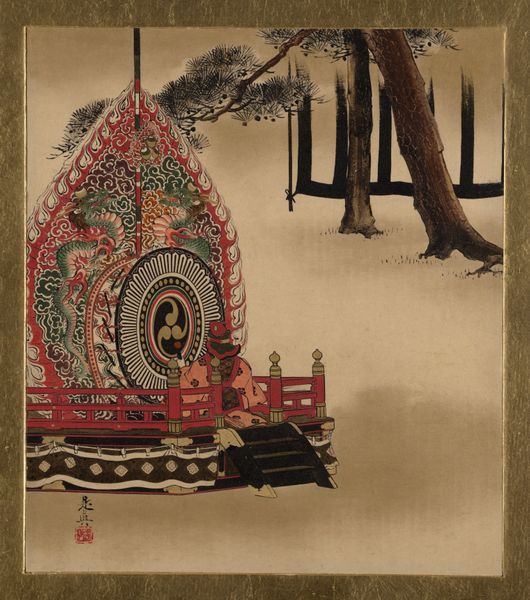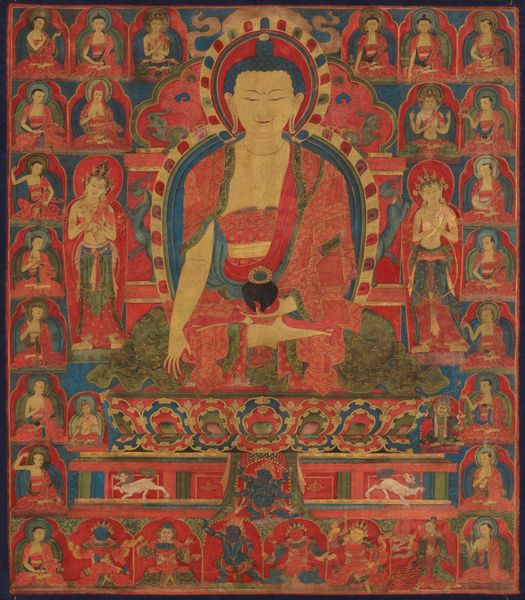
tempera, painting
#
narrative-art
#
tempera
#
painting
#
asian-art
#
figuration
#
miniature
Dimensions: 49 1/2 x 29 in. (125.73 x 73.66 cm)
Copyright: Public Domain
This thangka painting depicts Vajrabhairava, a wrathful deity in Tibetan Buddhism, and was made by an anonymous artist. The painting would have been commissioned by someone who wanted to connect with this figure, for protection and enlightenment. Vajrabhairava is often seen as a transformative figure, representing the conversion of negative forces into positive energy, and is rendered with multiple heads, arms, and legs to symbolize his all-encompassing power and ability to overcome obstacles. What does it mean to embody multiple perspectives, and how does this relate to the search for understanding and compassion? The complexity of the deity underscores a nuanced philosophy that acknowledges the existence of suffering, but offers a path towards liberation. The identity of Vajrabhairava embodies the duality of existence and the potential for enlightenment, urging us to confront our fears and embrace the complexities of the human experience.
Comments
minneapolisinstituteofart almost 2 years ago
⋮
This black-ground thangka would have guided an advanced practitioner in meditation focused on overcoming the fear of death. The central deity, Vajrabhairava, is depicted in his most ferocious form with numerous heads, including a water buffalo's as his central head. Each of his 32 arms bears a weapon and he tramples demons and Hindu gods underfoot. The image's ferocity was intended to protect the practitioner from their own fears and delusion when meditating on this difficult subject. Other protector deities surround Vajrabhairava, including the goddess Palden Lhamo on horseback at the bottom center, functioning to empower the practitioner. Five lineage gurus of the Gelugpa (yellow hat) order appear overhead, and the bodhisattva Manjushri is at the very center. The theme of death is further conveyed by the grizzly setting, likely a cremation ground, where frightening creatures run amock and blood, guts, brains, and eyeballs appear in offering vessels.
Join the conversation
Join millions of artists and users on Artera today and experience the ultimate creative platform.
